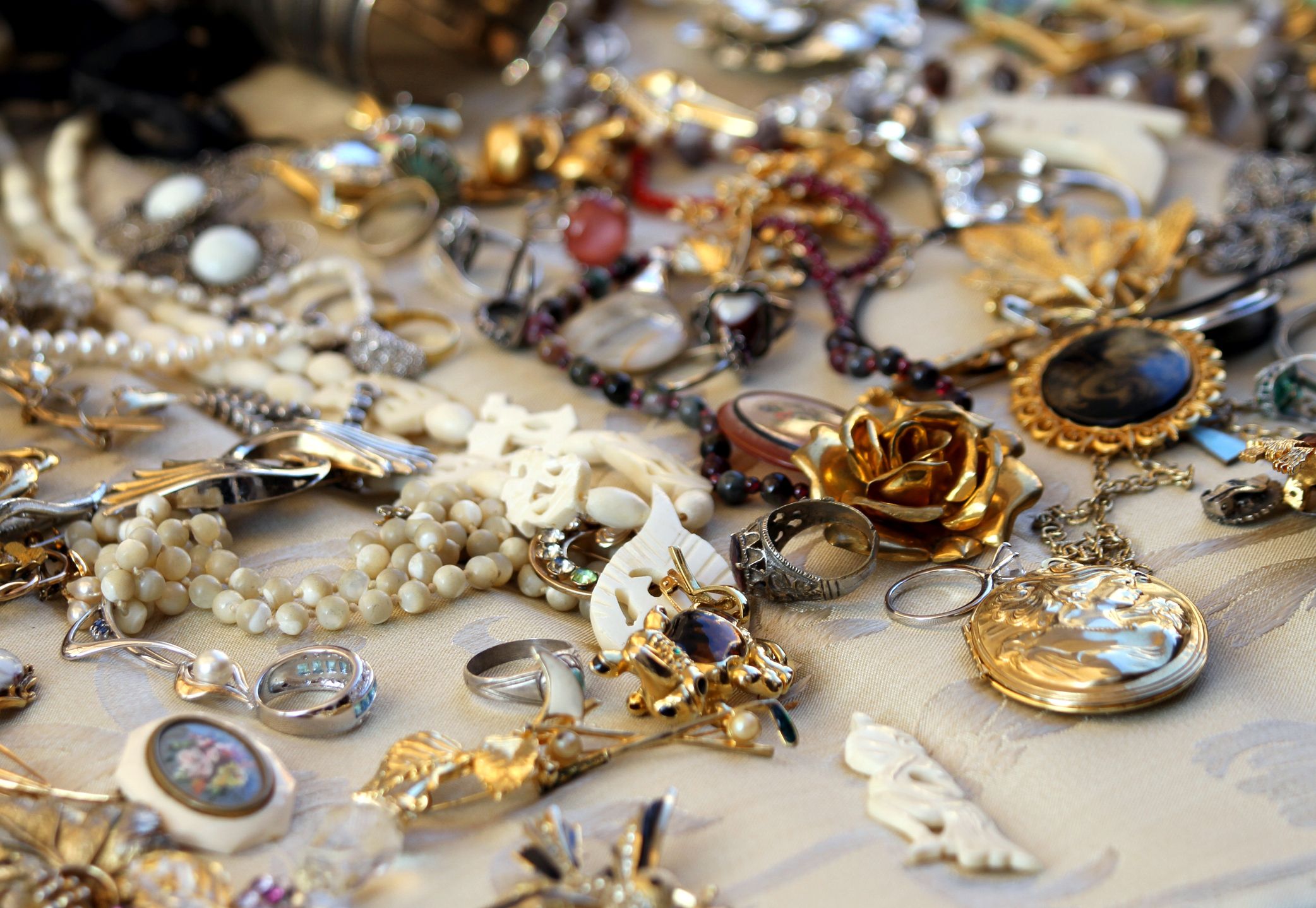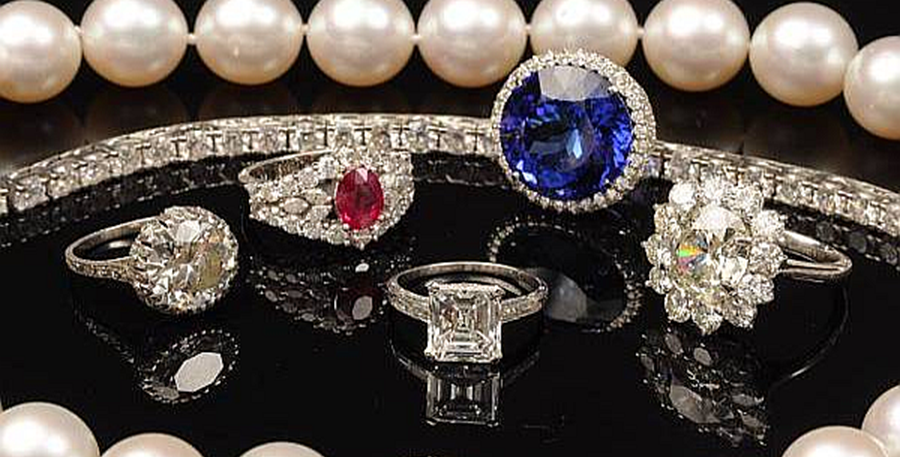Unveiling the Rich History Behind Exquisite Estate Precious Jewelry Pieces
The expedition of splendid estate precious jewelry pieces introduces a rich tapestry of history, mirroring the societal worths and imaginative motions of their time. From their beginnings as markers of riches amongst the elite to their transformation right into valued family antiques, these items symbolize stories that go beyond generations. Each historical age presents distinct design attributes and social influences that contribute to their attraction. As we examine the elaborate details and provenance of these items, one must think about the extensive tales they hold-- tales that may test our understanding of charm and relevance in the globe of jewelry.
The Beginnings of Estate Precious Jewelry
The beginnings of estate fashion jewelry can be traced back numerous centuries, showing a rich tapestry of social and historical influences. Originally, fashion jewelry worked as an icon of riches and status amongst aristocrats and nobility. As different worlds arised, special styles and strategies progressed, frequently intertwined with the practices and beliefs of their respective societies.

As cultures proceeded, estate precious jewelry started to represent more than mere accessory; it came to be a kind of individual expression, with pieces typically passed down through generations. This transfer of possession imbued each thing with stories and memories, even more enhancing its worth. Hence, estate fashion jewelry includes a myriad of influences, enveloping the significance of human experience, creativity, and history, making it a substantial element of the fashion jewelry world today.

Notable Historical Eras
Throughout background, numerous eras have dramatically influenced the design and relevance of estate precious jewelry. Each period came up with one-of-a-kind designs, materials, and cultural contexts that shaped the creativity of jewelry-making.
The Victorian age (1837-1901) noted an extensive change in jewelry design, defined by charming concepts and detailed workmanship. Throughout this time, jewelry typically represented individual belief and was regularly made use of to memorialize substantial life occasions. The Art Nouveau movement (1890-1910) followed, emphasizing organic kinds and moving lines, attracting ideas from nature and the human number.
The Roaring Twenties heralded the Art Deco duration (1920-1939), renowned for its geometric forms, strong colors, and a sense of modernity. This era mirrored the pep of allure Age and the wish for high-end and opulence. Adhering To Globe War II, the Mid-Century Modern era (1945-1960) welcomed simpleness and performance, showcasing clean lines and cutting-edge products.
Each of these historical eras has actually left an enduring mark on estate jewelry, not just in regards to aesthetic allure yet likewise in the way these items show the societal worths and technological advancements of their time.
Iconic Layout Attributes
Typically, iconic layout attributes of estate jewelry disclose a rich tapestry of social impacts and artistic activities. estate jewelry buyers near me. Each piece offers as a visual story, showcasing the stylistic preferences of its period and the artisans' proficiency. As an example, the detailed fretwork job common in Victorian precious jewelry exemplifies the period's attraction with nature and romance, often including motifs such as blossoms and leaves.
The Art Nouveau movement introduced moving lines and organic types, stressing the beauty of natural environments. In contrast, the strong geometric patterns of Art Deco precious jewelry reflect the YOURURL.com modernist values of the 1920s, identified by symmetry and a concentrate on commercial products.
Additionally, the use of lively gems and innovative techniques, such as enameling and pavé settings, additionally identifies these pieces. Color combinations commonly represent particular social contexts, with particular stones symbolizing wide range or status.
Famous Estate Jewelry Pieces
Estate jewelry incorporates a selection of prominent pieces that have gone beyond time, each telling a special story of its origin. Amongst these, the "Napoleon Diamond Locket," originally crafted for Empress Josephine, exemplifies luxury with its elaborate layout and historic significance. One more legendary item is the "Cartier Panther Bracelet," which showcases the iconic panther theme that has ended up being associated with the Cartier name, mixing creativity with a bold declaration.
The "Bulgari Serpenti" collection, with its sinuous, snake-inspired designs, has captivated collectors since the mid-20th century, symbolizing deluxe and attraction. In addition, the "Maharaja Pendant," decorated with a captivating array of gems, mirrors the magnificence of Indian nobility and the rich social heritage connected with estate fashion jewelry.

The Value of Provenance
Provenance plays an essential role in figuring out the worth of estate fashion jewelry, as it gives a recorded background that improves the item's relevance and worth. A thing with a well-documented family tree usually regulates greater rates as a result of its organization with famous numbers, historic events, or creative movements. Collectors and investors alike are drawn to items that inform a tale, as these stories add layers of implying beyond mere visual appeals.
The verification of provenance can involve numerous kinds of paperwork, such as original purchase invoices, assessments, and exhibit records. Additionally, narrative histories passed down through family members can add to the narrative, enhancing the attraction of the precious jewelry (estate jewelry for sale). The even more trustworthy and comprehensive the provenance, the most likely it is to stand out on the market
Moreover, provenance can reduce issues regarding credibility; items with established histories are less most likely to be seen as reproductions or phonies. By doing this, provenance not only raises the innate worth of estate fashion jewelry but also safeguards the collector's financial investment. Ultimately, an engaging provenance transforms an item from a mere item into a treasured artefact of history, making it a desirable addition to any kind of collection.
Conclusion
The expedition of estate jewelry discloses a profound connection in between artistry and historic context. Each piece functions as a testimony to the craftsmanship and cultural impacts of its time, reflecting the progressing preferences and values of society. The value of provenance further improves the attraction of these treasures, transforming them right into valued heirlooms. Eventually, the abundant stories behind estate jewelry not only commemorate specific artistry but likewise envelop the more comprehensive tapestry of human history and social development.